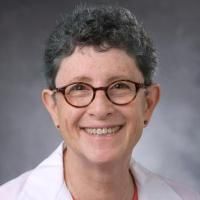Umbilical cord blood transplantation for children with thalassemia and sickle cell disease.
Date
2011-09
Journal Title
Journal ISSN
Volume Title
Repository Usage Stats
views
downloads
Citation Stats
Abstract
We examined the efficacy of unrelated cord blood (CB) transplantation in children with thalassemia (n = 35) and sickle cell disease (n = 16), using data reported to 3 registries. Donor-recipient pairs were matched at HLA-A and -B (antigen level) and DRB1 (allele level) in 7 or HLA mismatched at 1 (n = 18), 2 (n = 25), or 3 loci (n = 1). Transplant conditioning was myeloablative (n = 39) or reduced intensity (n = 12). Neutrophil recovery with donor chimerism was documented in 24 patients; 11 patients developed grade II-IV acute graft-versus-host disease (aGVHD) and 10 patients, chronic GVHD (cGVHD). Overall survival (OS) and disease-free survival (DFS) were 62% and 21% for thalassemia and 94% and 50% for sickle cell disease (SCD), respectively. In multivariate analysis, engraftment rate (hazard ratio [HR] 2.2, P = .05) and DFS (HR 0.4, P = .01) were higher with cell dose >5 × 10(7)/kg. The 2-year probability of DFS was 45% in patients who received grafts with cell dose >5 × 10(7)/kg and 13% with lower cell dose. Primary graft failure was the predominant cause of treatment failure occurring in 20 patients with thalassemia and 7 patients with SCD. Primary graft failure was fatal in 5 patients with thalassemia. These results suggest that only CB units containing an expected infused cell dose >5 × 10(7)/kg should be considered for transplantation for hemoglobinopathy.
Type
Department
Description
Provenance
Subjects
Citation
Permalink
Published Version (Please cite this version)
Publication Info
Ruggeri, Annalisa, Mary Eapen, Andromachi Scaravadou, Mitchell S Cairo, Monica Bhatia, Joanne Kurtzberg, John R Wingard, Anders Fasth, et al. (2011). Umbilical cord blood transplantation for children with thalassemia and sickle cell disease. Biology of blood and marrow transplantation : journal of the American Society for Blood and Marrow Transplantation, 17(9). pp. 1375–1382. 10.1016/j.bbmt.2011.01.012 Retrieved from https://hdl.handle.net/10161/24672.
This is constructed from limited available data and may be imprecise. To cite this article, please review & use the official citation provided by the journal.
Collections
Scholars@Duke

Joanne Kurtzberg
Dr. Kurtzberg is an internationally renowned expert in pediatric hematology/oncology, pediatric blood and marrow transplantation, umbilical cord blood banking and transplantation, and novel applications of cord blood and birthing tissues in the emerging fields of cellular therapies and regenerative medicine. Dr. Kurtzberg serves as the Director of the Marcus Center for Cellular Cures (MC3), Director of the Pediatric Transplant and Cellular Therapy Program, Director of the Carolinas Cord Blood Bank, and Co-Director of the Stem Cell Transplant Laboratory at Duke University. The Carolinas Cord Blood Bank is an FDA licensed public cord blood bank distributing unrelated cord blood units for donors for hematopoietic stem cell transplantation (HSCT) through the CW Bill Young Cell Transplantation Program. The Robertson GMP Cell Manufacturing Laboratory supports manufacturing of RETHYMIC (BLA, Enzyvant, 2021), allogeneic cord tissue derived and bone marrow derived mesenchymal stromal cells (MSCs), and DUOC, a microglial/macrophage cell derived from cord blood.
Dr. Kurtzberg’s research in MC3 focuses on translational studies from bench to bedside, seeking to develop transformative clinical therapies using cells, tissues, molecules, genes, and biomaterials to treat diseases and injuries that currently lack effective treatments. Recent areas of investigation in MC3 include clinical trials investigating the safety and efficacy of autologous and allogeneic cord blood in children with neonatal brain injury – hypoxic ischemic encephalopathy (HIE), cerebral palsy (CP), and autism. Clinical trials testing allogeneic cord blood are also being conducted in adults with acute ischemic stroke. Clinical trials optimizing manufacturing and testing the safety and efficacy of cord tissue MSCs in children with autism, CP and HIE and adults with COVID-lung disease are underway. DUOC, given intrathecally, is under study in children with leukodystrophies and adults with primary progressive multiple sclerosis.
In the past, Dr. Kurtzberg has developed novel chemotherapeutic drugs for acute leukemias, assays enumerating ALDH bright cells to predict cord blood unit potency, methods of cord blood expansion, potency assays for targeted cell and tissue based therapies. Dr. Kurtzberg currently holds several INDs for investigational clinical trials from the FDA. She has also trained numerous medical students, residents, clinical and post-doctoral fellows over the course of her career.
Unless otherwise indicated, scholarly articles published by Duke faculty members are made available here with a CC-BY-NC (Creative Commons Attribution Non-Commercial) license, as enabled by the Duke Open Access Policy. If you wish to use the materials in ways not already permitted under CC-BY-NC, please consult the copyright owner. Other materials are made available here through the author’s grant of a non-exclusive license to make their work openly accessible.
